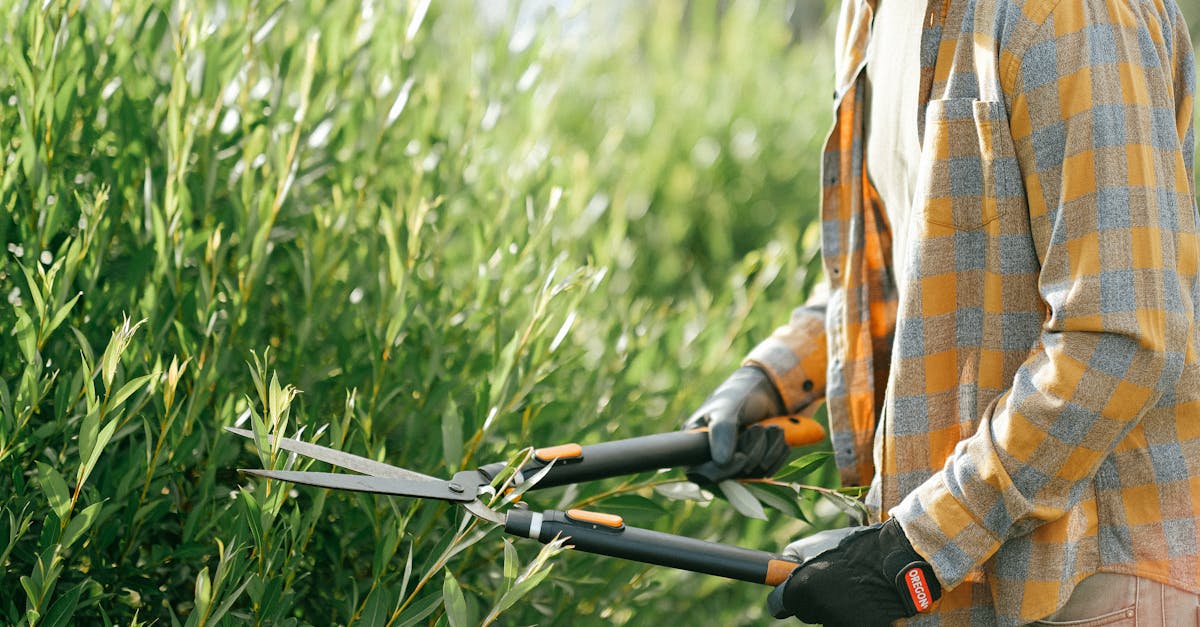
Pruning large trees requires a fine balance between maintaining health and ensuring safety. Did you know that improper pruning can lead to severe tree decay, disease, and structural issues that might take years to become apparent? In fact, cutting branches too close to the trunk or removing excessive limbs can seriously harm your tree’s vitality. This guide will provide you with effective techniques and essential safety measures to prune large trees without risking damage.
The importance of proper pruning
Pruning not only promotes healthy growth but also enhances the appearance of your trees. It helps to remove dead or diseased branches, encourages new growth, and can even improve the structure and strength of the tree.
Why prune large trees?
Large trees require special attention when pruning due to their size and the potential risks involved. Here’s why it’s crucial:
-
Health maintenance: Removing dead or diseased branches prevents the spread of issues.
-
Safety: Proper pruning minimizes hazards such as falling branches.
-
Aesthetic appeal: Pruning improves the overall look of your trees and landscape.
Essential tools for tree pruning
The right tools are fundamental to effective pruning. Using clean and sharp equipment will help you make precise cuts and reduce stress on the tree.
Here are the tools you should consider having on hand:
-
Pruning saw: Use a saw with a blade length of 14-21 inches for branches up to 8 inches thick.
-
Bypass loppers: These should have a 30-inch handle to handle cuts up to 2.5 inches.
-
Chainsaw: A chainsaw with a 16-20 inch bar is ideal for branches exceeding 8 inches.
Timing your pruning
Knowing when to prune is just as important as knowing how. The timing of pruning affects how well the tree heals and its general health.
Seasonal pruning guidelines
Different trees have specific pruning schedules. Here’s a quick overview:
|
Tree type |
Best pruning season |
Risk period |
|---|---|---|
|
Deciduous |
Late winter (january-march) |
Spring bloom |
|
Evergreen |
Mid-Winter (december-february) |
Growing season |
|
Fruit trees |
Late winter/early spring |
Fall/winter |
|
Oak |
Winter |
Spring (to prevent oak wilt) |
Pruning techniques
Using the right pruning methods is vital for reducing the likelihood of damage. Following a systematic approach will help keep the tree healthy.
The three-cut method
This technique is especially useful for larger branches, promoting healing and minimizing the risk of tearing. Here’s how to execute it:
-
Make the first cut underneath the branch to create a notch.
-
Perform the second cut to relieve some weight from the branch.
-
Make the final cut just outside the branch collar to promote natural healing.
Maintenance pruning
Maintenance pruning is essential for the health and safety of trees. It involves removing dead, diseased, or damaged wood to prevent the spread of problems. Thinning improves air circulation and light penetration, reducing disease risk. Crown reduction manages size and safety near power lines. Training pruning guides the structure of young trees to avoid future issues. It’s ideally performed during dormancy for most deciduous trees.
Fruit tree pruning
Fruit tree pruning aims to maximize fruit production and quality while maintaining the tree’s health and shape. It encourages the development of fruiting spurs and controls vegetative growth. Dormant pruning influences future production, while summer pruning manages growth and improves sun exposure. Techniques vary by fruit type and desired training system, with a specific timing schedule to follow.
Restoration pruning
Restoration pruning is applied to neglected or poorly pruned trees to improve their structure, health, and appearance. It’s a gradual process that can span several years. The initial step involves removing hazardous and dead branches, followed by progressively thinning the crown. The goal is to re-establish good structure with well-spaced scaffold branches while stimulating healthy new growth without over-stressing the tree.
Bud rubbing and pinching
Bud rubbing involves manually removing unwanted buds before they develop into shoots, thereby redirecting growth to desired buds. Pinching, on the other hand, entails removing the tender tip of a young shoot to encourage lateral branching and achieve a bushier plant. These techniques are particularly useful on young plants to shape their growth and control their density. Bud rubbing is done in spring, and pinching during the active growing season.
Key considerations while pruning
When pruning, keep these key factors in mind:
-
Branch size and Location: Assess the weight and proximity of branches to structures and power lines.
-
Weather conditions: Aim for dry, calm days to avoid additional hazards.
-
Personal safety: Always wear protective goggles, gloves, and a hard hat while pruning.
Post-pruning care
The work doesn’t end once you’ve finished pruning. Proper care afterward is necessary for the tree’s recovery.
Look closely at the tree for signs it’s healing well. This includes new tissue growing around the cuts. Regularly check the trimmed areas for any strange color changes or wetness. Make sure the tree’s base gets enough water, but don’t add a lot of fertilizer right after pruning.
If you ever feel overwhelmed or uncertain about pruning large or complicated trees, it’s better to consult with a certified arborist. Some situations require help from professionals. This includes when branches are close to power lines, are very thick (over six inches), or if trees appear unhealthy or fragile.
https://www.youtube.com/watch?v=L6iCvh1BduY![]()











